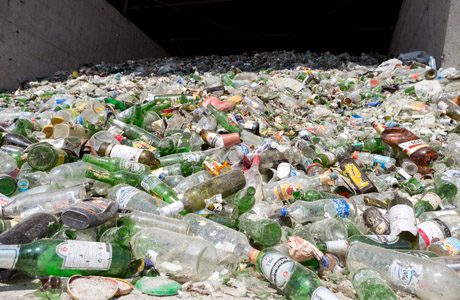
A study commissioned by the Netherlands Institute for Sustainable Packaging (KIDV), and conducted by the Dutch research institute CE Delft, appears to reveal the effectiveness of the circular economy as a strategy for tackling greenhouse gas emissions, a fact that should be reflected in the thinking and wording behind climate policy, say the authors.
The finding of The Circular economy: a key instrument for CO2 reduction is that proper waste management strategies can achieve a significant reduction of greenhouse gas emissions. Increased recycling of 2/3 of municipal solid waste can reduce the annual global greenhouse gas emissions by 6%, says the report, while the EU’s greenhouse gas emissions could annually be reduced by 4%. Municipal solid waste makes up 10% of all waste generated. Therefore the potential reduction of greenhouse gases could be much higher if other waste fractions were also taken into account.
In a circular economy there is no such thing as waste, only renewable energy is used and resource use is optimised. The focus is on reduce, reuse and recycle as waste management strategies.
Climate policy and circular economy
Including circular economy options in European climate policies can make these policies more efficient and cost-effective, say the authors. It also makes it more likely that the adopted climate goals of the Paris climate conference (COP21) in December 2015 will indeed be secured.
The European Commission has recognised the potential of the circular economy model to maintain and improve EU’s competitiveness as an economic entity and at the same time reduce its CO2 emissions. However, in the climate policies of the EU, as well as most of its member states, no reference is made to circular economy policies as a means to reduce European greenhouse gas emissions. At present, climate policies focus primarily on energy and transport. Major potential additional benefits of policies focused on materials and the circular economy are thereby generally being overlooked. The circular economy package ‘Closing the loop’, adopted by the European Commission in 2016, fits well in this perspective: offering a possibility to combine both circular economy policy and climate policy.
A shift from landfilling to increased recycling of only a handful of waste streams can significantly reduce the annual emissions of greenhouse gases. The calculation in the study is based on 2/3 municipal solid waste, because 100% recycling is not feasible in the short term. The potential reduction of CO2 could be significantly higher if the remaining 1/3 of municipal solid waste were also taken into account, as well as other waste fractions such as industrial waste and construction and demolition waste.
Circular strategies and CO2 reduction
The main conclusion of the research is that characteristic aspects of a circular economy, such as decreased material use, increased recycling and resource optimization can and should be seen as strategies to reduce greenhouse gas emissions. The report illustrates the possible gains in CO2 reduction to be made from shifts in strategy, from disposal to energy-recovery, from energy-recovery to recycling, from recycling to re-use and from re-use to reduce.







